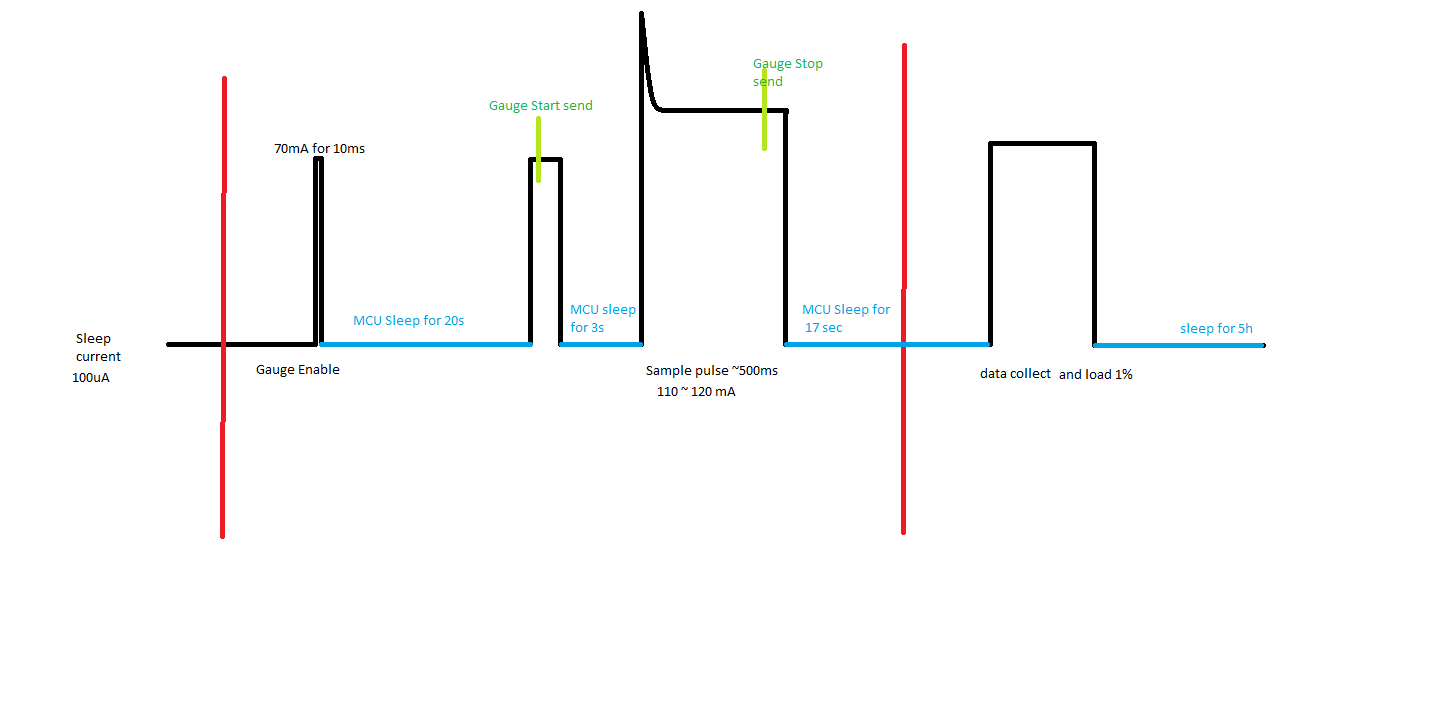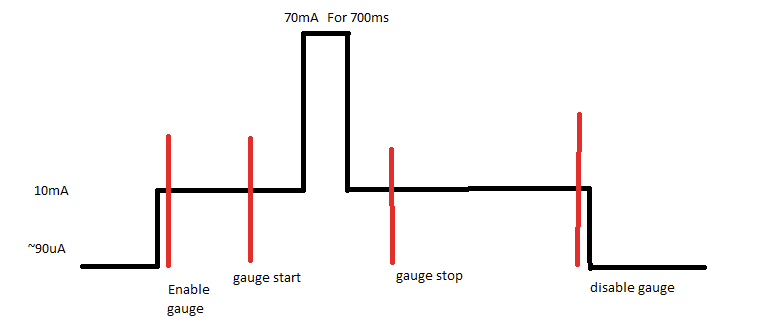Dears,
What is the best way for proper gauging in rarely discharged application, where there are no controlled load only MCU and the fuelgauge both operating on the same battery power?
The MCU is mostly sleep only wakes up to do gauge sampling.
I did the following but I keep getting BAD_EOS_OCV flag, although I take samples after battery rest for 5 hours,
I'm using LS14500 battery.
here is the sequence:
1- Switch from main power to battery power and MCU sleep.
2- after 5h wake-up MCU to enable the gauge then MCU sleep.
3- after 20 seconds wake-up MCU to send gauge-start command, then MCU sleep.
4- after 3 seconds wake-up MCU to act as (100mA)load for 500ms, then send gauge-stop at the end and set MCU sleep.
5- after 17 seconds wake-up MCU to collect registers and EOS flash data from the guage and go long sleep.
6- electronic load to drain 1% of the battery( 26mA for 1h).
7- repeat from step 2.
sleep current about 100u,
MCU is the sampling load as there is no controlled resistor.
as shown in the following drawing:
my concern is the region between the red lines.

R_delay is 15
EOS_RELAX_V_Hi_MAX Counts is 10
NewBATT_Rscale delay is 2
voltage register readings range from 3640 to 3661 mV
Thanks in advance,


